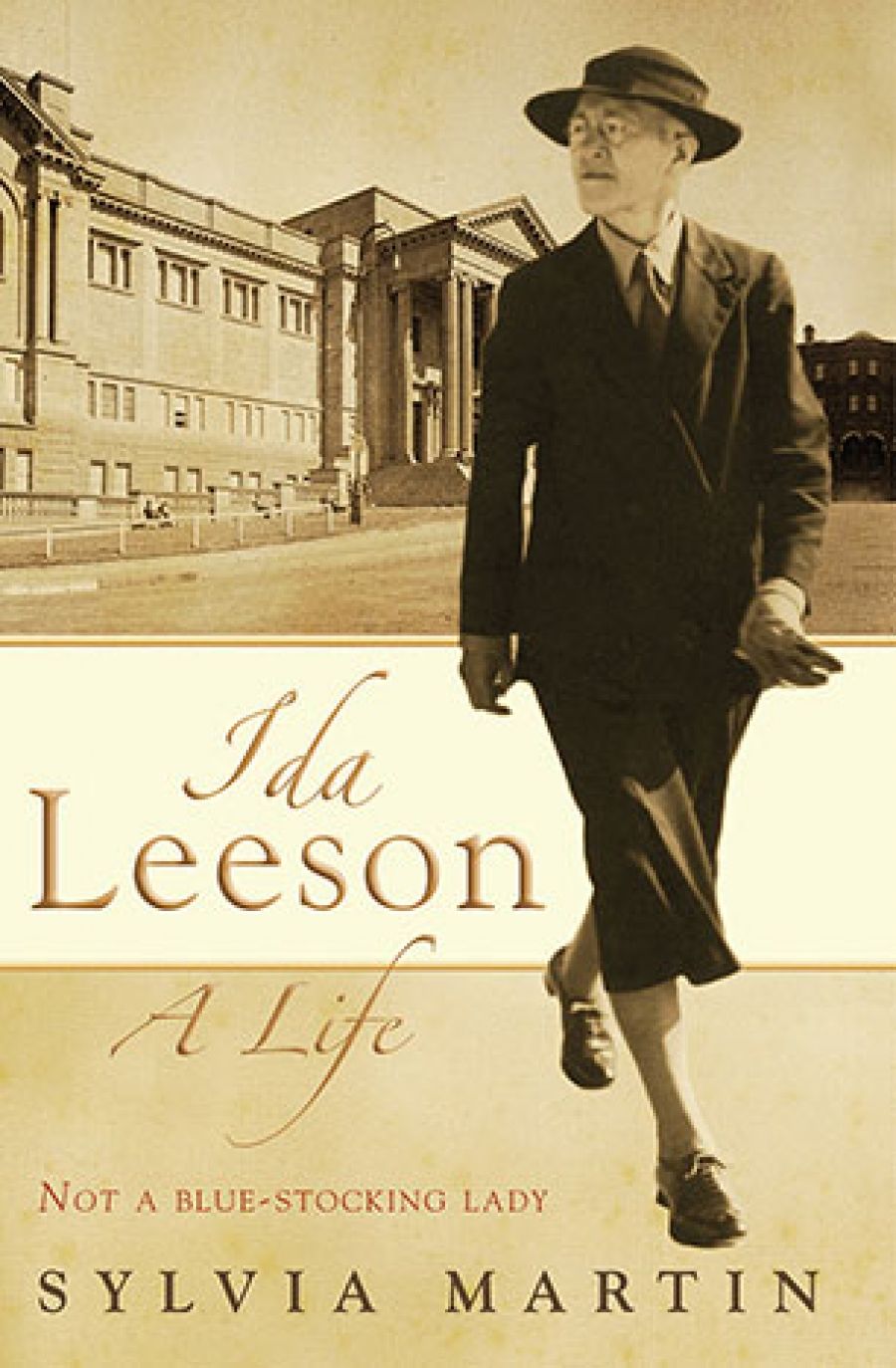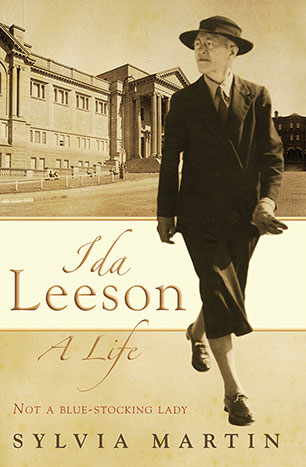
- Free Article: No
- Contents Category: Biography
- Review Article: Yes
- Article Title: No ordinary librarian
- Online Only: No
- Custom Highlight Text:
This book opens in Papeete one evening in 1935. Two American film-makers are in Tahiti to take location shots for Mutiny on the Bounty, and director Frank Lloyd laments his failure to find Captain Bligh’s log books. A small white-haired person of indeterminate appearance at the next table leans over: ‘I know where they are,’ she says. Of course she did. The logbooks were in the Mitchell Library, Sydney, and the speaker was Ida Leeson, Mitchell Librarian from 1932 to 1946. The Mitchell Library, located in the Public (now State) Library of New South Wales, is based on the priceless collection of Australiana and south-west Pacific materials donated in 1907 by the reclusive bibliophile David Scott Mitchell. Leeson, its second chief custodian, not only knew the vast collection backwards but added significantly to it. She also used it herself, a key to effective librarianship.
- Book 1 Title: Ida Leeson
- Book 1 Subtitle: A life
- Book 1 Biblio: Allen & Unwin, $29.95 pb, 256 pp
- Book 1 Cover Small (400 x 600):

- Book 1 Cover (800 x 1200):

Leeson had an important second career. Colonel Alf Conlon seconded her to the Directorate of Research and Civil Affairs in Melbourne, where she served as research officer during World War II. From 1946 to her retirement in 1955, she organised specialist libraries at the Australian School of Pacific Administration in Sydney (ASOPA), whose staff for a time included John Kerr, the future governor-general; then with the South Pacific Commission in Noumea, where she worked under the anthropologist Harry Maude and made new friends, including the writer Nancy Phelan. In retirement, until her death at seventy-nine in 1964, she continued to research the collections she had done so much to develop, and to support the work of others.
Leeson was no ordinary librarian. Indeed, she was a legend in her own lifetime, partly because the library hierarchy was reorganised to prevent her, as a woman, from rising to the position of chief librarian. In her mind, the loss of status and salary for the Mitchell Librarian was the issue. Nor was she a ‘bluestocking’. Reading about her reminds me of my friend, the Russian cultural historian Katerina Clark, who, when asked what she was doing for the women’s movement, said she was getting on with her work.
The cover image suggests that Leeson was different in other ways. Short, slim, severely suited, with collar and tie and leather gloves in hand, she strides purposefully forward in her lace-ups. Before jumping to conclusions, it should be said that successful women often dressed like that, Jessie Street for example. The ‘male fantasy’ that she wore red-ribboned bloomers underneath her suit skirt is effectively dismissed by Sylvia Martin.
Leeson’s pork-pie hats probably were exceptional; and she never married. Her lifelong companion, the anthroposophist Florence Birch, was the New Zealand-born aunt of the distinguished Sydney zoologist Charles Birch. Recovering Florence from obscurity is one of Martin’s triumphs, as is her carefully modulated analysis of the loving relationship between the two women. Even if the ‘femme’ Florence twittered like a tree full of sparrows at sunset, Martin suggests, the word ‘lesbian’ is probably anachronistic, and certainly reductive.
Among the pleasures of this well-written biography are its settings, mostly in old Sydney. Ida was born in 1885, in working-class Leichhardt. Strongly supported by her mother, a deserted wife, she won a scholarship to Sydney Girls’ High School, situated on the site of today’s David Jones store, and then a bursary to the University of Sydney, reached, as now, by a walkway through Victoria Park. There she obtained an honours degree in history under the liberal professor George Arnold Wood. Her library career began soon after, in the ramshackle old Reference Library in Bent Street. By 1916 she was living with her mother in nearby Phillip Street. From the 1920s she and Florence lived on the Lower North Shore, most notably at Castlecrag, in the heyday of Walter and Marion Griffin.
Leeson knew most of the Sydney intelligentsia, among them Christopher Brennan, from whom she learned the art of cataloguing; opera coach Lute Drummond and play-wright Betty Roland in the Castlecrag crowd; Miles Franklin, whose appreciation of ‘a rare character’ did not preclude occasionally treating Leeson as her personal proofreader; anthropologist Camilla Wedgwood; and Angus & Robertson editor Beatrice Davis (casually referred to as ‘Trix’).
At a time when cultural nationalism was struggling to survive, Ida stood firm. Asked to assess Malcolm Ellis’s claim to a prize for a biography of Lachlan Macquarie in 1939, subsequently awarded to Miles Franklin, she deemed the Macquarie manuscript unfinished, adding that anything by Miles Franklin would be better written.
Leeson deserved this professional biography. I greatly enjoyed Sylvia Martin’s book and feel sure others will too.


Comments powered by CComment